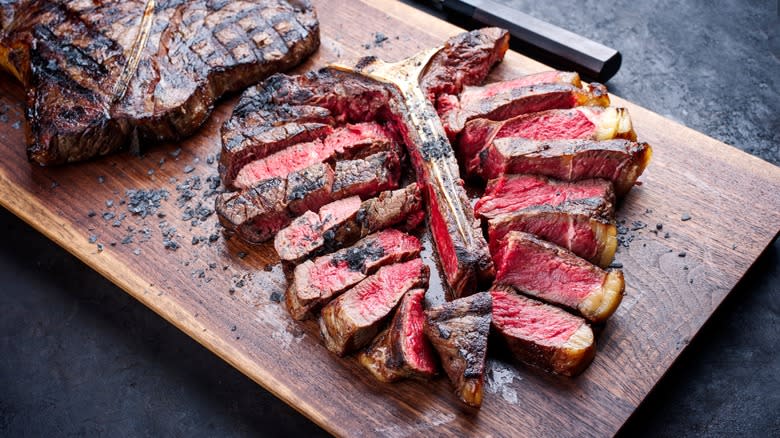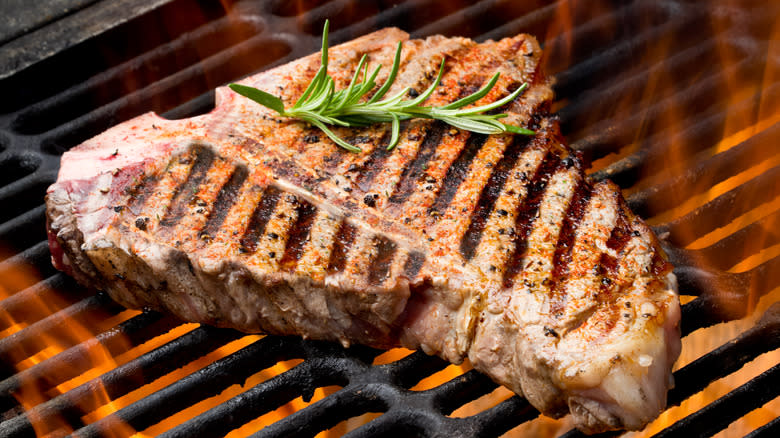What You Should Know Before Buying T-Bone Steaks

There's so much to choose from when it comes to deciding on making a steak dinner -- bone-in or boneless, cast iron pan cooking method or grill, or maybe even sous vide. Some beef cuts are more of a challenge for home cooks, whether that's due to being naturally tough and easy to overcook or because they're more difficult to manage during cooking. Bone-in cuts like T-bone steaks are in that latter category.
T-bone steaks can be a challenge to sear directly on a hot pan if you're looking for a nice crust, because the meat rests a bit lower than the bone due to natural moisture loss during aging. They're also made of two distinct muscles divided by the center bone -- the tenderloin and the sirloin strip -- also referred to as a New York strip steak. The two cuts have different amounts of marbling and tendon, presenting another challenge for getting both sides cooked nicely without over or undercooking.
Read more: Tips You Need When Cooking With Ground Beef
Success With A T-Bone Steak Is All In The Cooking Method

T-bone steaks are a classic steak cut with a hefty price tag, so if you're tempted to pick one up, here are a few tips for success to make the most of your investment. The heat from a grill fire will give you better results than cooking on the stove because of the difficulty of getting the meaty portions in direct contact with a pan. Place the steak on the grill with the tenderloin near the coolest side of the grill, which will help protect the lower fat cut from overcooking. The tenderloin side is the smaller portion of meat. As the steak heats, the edges tend to roll upward because they are cooking faster than the area near the bone, but on a grill, this won't be a problem due to the radiant heat from the fire. Use an instant-read thermometer to check for your preferred level of doneness, since the bone can make the touch test for internal temperature less accurate.
If you can't grill your T-bone, you can cook it in a pan or the oven with careful attention to detail. When you sear the meat, you might need to press it lightly to be sure it comes in contact with the pan for a good crust to develop. After searing both sides, transfer the pan to a hot oven to finish cooking -- the hot oven air will do a better job cooking the steak from all sides.
Read the original article on Tasting Table.